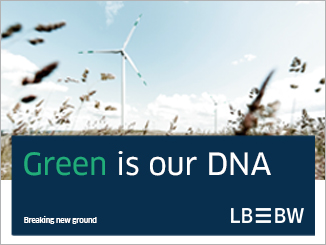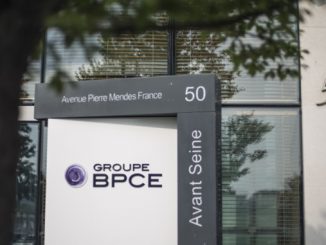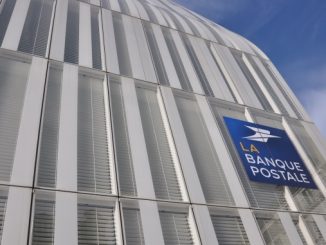The Federal Republic of Germany took the green bond market to a new level on 2 September with the launch of its first green Bund. Ahead of Germany’s first green bond auction on 4 November, Deutsche Finanzagentur co-CEO Dr Tammo Diemer discussed with Sustainabonds’ Neil Day its twin bond concept, how the pandemic has affected its activity, and the arrival of the EU in the sustainable bond market.
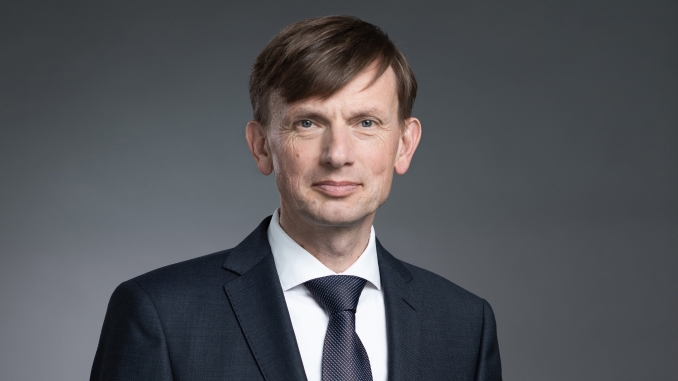
You can also download a pdf of the interview here.
Neil Day, Sustainabonds: What is Finanzagentur’s role in Germany’s policy response to the Covid-19 pandemic?
Dr Tammo Diemer, Deutsche Finanzagentur (pictured above): Our role is to ensure the federal government’s ability to act and react. Since the government expects less tax income than originally planned and also higher expenditures, we significantly increased our funding volume — compared to the plans we published in December last year, we have doubled the volume.
One of our main objectives is always to maintain our status of being the reference rate of the Euro area. We have therefore stuck to the structure of our issuance calendar, published in December last year, but increased the volumes. We also filled potential open auction dates by introducing new maturities, a seven year and a 15 year. And we significantly increased our bill activities at the short end of the curve.
A number of debt managers in the euro area — all of them, I think — have done very similar things, and for all of us it has worked out fairly well, and therefore we were all able to fulfil our goals.
Day, Sustainabonds: Year-end is approaching and we are seeing a second wave of the pandemic across Europe. Have you made provisional plans for the coming year? And to what extent is this affected by the latest health and related economic developments?
Diemer, Deutsche Finanzagentur: The situation in March and April was characterised by high uncertainty, so we did the best we could to pick the right funding volume, and ended up doing a lot in the second and third quarters. So if you look at our issuance pattern for 2020, we did roughly €50bn in the first quarter, then around €150bn each in the second and third quarters, and in the fourth quarter we scaled back to about €50bn.
The forecast for next year is that the funding volume will be comparable to 2020 based on the redemptions and current deficit estimation. But my expectation is that this will be distributed more evenly over the various quarters. We now have greater certainty than in 2020 as to what the overall volume should be.
Day, Sustainabonds: How, if at all, was the timing of the first green Bund affected by everything that happened this year?
Diemer, Deutsche Finanzagentur: Not at all. We stuck to our plans. We had already developed our strategy for issuing green bonds — the “twin bond” product — last year. This year, a core team comprising members of the Federal Ministry of Finance, the Federal Ministry for the Environment, Nature Conservation and Nuclear Safety, and the Finanzagentur — which was supported by Crédit Agricole as our sole structural adviser and KfW as our special advisor — worked on creating the green bond framework and collecting and selecting the green expenditures. That worked out according to our original plans, and thankfully was not disturbed by the other big changes we had to face as a result of the Covid pandemic.
Day, Sustainabonds: How would you characterise the outcome of the first green Bund and how did it compare with your hopes and expectations?
Diemer, Deutsche Finanzagentur: Our ambition is to create a whole curve of green bonds within a relatively short period of time, and this first transaction was a very promising start.
From an economic point of view, we were able to issue with a yield level slightly below our conventional bond, which reflects the fact that the green element carries a value. And for investors, it was a success, in that it outperformed in the aftermath of the transaction.
The twin bond concept has been accepted and appreciated by market participants — not only by investors, but also other issuers are interested in that concept, rating agencies think that it is helpful and supportive, and banks like it as well. We also have trading-oriented companies that quite like the transparency and the tradability of the various instruments involved. So we indeed achieved very positive feedback and a promising start for the ambition that we have in mind.
Day, Sustainabonds: Looking more generally, at the framework and expenditures that you mentioned the core team had been working on, how did investors view that and also the general idea of the German government issuing a green bond?
Diemer, Deutsche Finanzagentur: For the environment, it is of paramount importance what we do on the expenditure side — that investments and expenditures support the sustainable development of the economy and how we live. And at the sovereign level, that is clearly part of the planning and execution of the budget, which is in the hands of government and parliament.
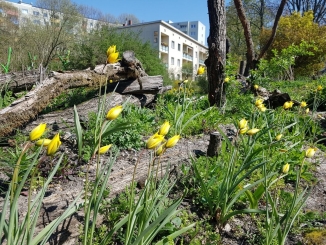
The role we play vis-à-vis the environment by refinancing this expenditure with green bonds is limited. So our contribution on the liability side can only be to further develop the sustainable finance market by adding value to it and generating interest in it among other participants. This is because a huge amount of investment needs to be undertaken over the coming years to achieve our climate goals, and in order to refinance these activities, a functioning and efficient green bond market will be supportive of reaching these goals.
It is our understanding that it would be very helpful if the green bond market also offers better refinancing conditions for issuers, that the green element has a value whereby investors are willing to forego a certain amount of yield in order to make sure that his or her engagement is invested in a sustainable and environmentally friendly way. Having a more efficient refinancing instrument will then motivate other issuers to use the green bond market, so that they are motivated to do more and more environmentally friendly investments with the support of this capital markets instrument. So from our perspective, if we are able to make it clear that the green element has value, that is an important contribution towards developing the sustainable finance market.
We are very grateful to the many market participants who have developed this market over the last 10 years. Our ambition is to add a little value here and help the sustainable finance market take another step forward.
Day, Sustainabonds: You mentioned the price difference the green Bund achieved and how it performed in the secondary market. Have you any expectations in respect of the pricing of your forthcoming and subsequent issues?
Diemer, Deutsche Finanzagentur: We have no particular target here — except that we will make sure that the green element also has a positive value in our auctions as well. The spread between green and conventional Bund is a market variable depending on supply and demand. As in all our primary market activities, we will go through a process of price discovery, carefully analysing the secondary market trading of the twins, looking at the orders we have in the book — whether it is a syndicated transaction or an auction — and at the price levels there, and on that basis we will make our decision. So, our green issues will both be aligned with the secondary market and also reveal the positive green value in the primary market.
Day, Sustainabonds: What can you tell us about your plans for the forthcoming issue? Are there any lessons from the first green Bund that will inform the process, or any differences?
Diemer, Deutsche Finanzagentur: It will be a five year bond and €5bn issuance volume. Of course, we will apply the twin bond concept again, which is designed and set for the upcoming issues during the next years. However, this time we will use an auction instead of a syndication. The twin bond concept is originally designed for issuance via auctions. We will use the 4 November sale as another step in proving our concept, and we are very curious how it will behave in an auction.
As I mentioned, we are building up a curve. We started with a 10 year in September, since 10 years is clearly the most important maturity bracket in fixed income markets. We will offer now a five year transaction, which should attract the attention of investors. Our plan for 2021 is to extend the maturity spectrum and quite possibly have a 30 year transaction.
Day, Sustainabonds: To what extent could the twin bond concept be a role model in the development of the sustainable bond market?
Diemer, Deutsche Finanzagentur: This is obviously not in our hands, but it will be interesting to see whether the twin bond concept could be applied by other issuers.
You need a certain amount of prerequisites in order to be able to apply the twin bond concept in the way we do. It is not only a matter of issuing green bonds with the same maturity and coupon; clearly you also need secondary market activities as an issuer and maybe even repo facilities. We take an active role in the secondary market, and clearly not all issuers can provide this. But some can, and for those the twin bond concept might be worthwhile considering.
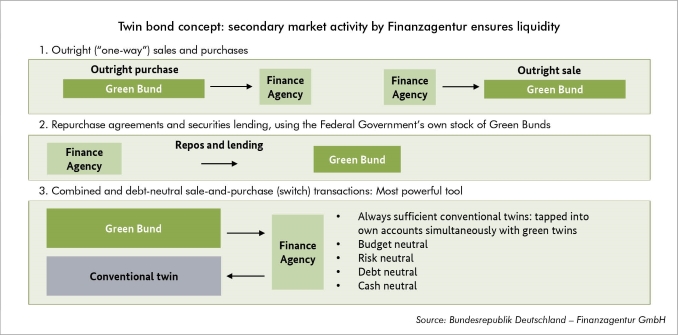
In our case, there is a clear reason for using the twin bond concept, as we discussed earlier: we play the role of a yield benchmark in the euro area, and this means providing the best tradability of bonds that you can have as an investor. The twin bond concept was really aimed at safeguarding liquidity in the conventional space, and adding value for the green space, so that green bonds benefit from the tradability of conventional bonds. The Federal Republic of Germany is in a prominent situation, for which the twin bond concept is the most appropriate.
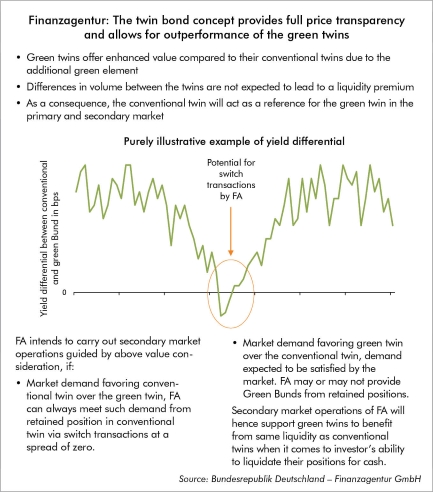
Day, Sustainabonds: The state of NRW has been issuing sustainable bonds and Baden-Württemberg is planning a green bond. There has meanwhile been discussion about moving green and social instruments under an overall “sustainable” umbrella, while we have also seen new labels and types of instruments. To what extent might it make sense to have some harmonisation in approach across German federal and state issuers?
Diemer, Deutsche Finanzagentur: It’s good to have variety, in particular for the development of the market in the coming years. It is good that we have a number of ideas and initiatives, so I see this as positive. And harmonisation has already been established by ICMA — they created the Green Bond Principles, which we follow, and which I’m sure Baden-Württemberg and other issuers will also follow, so this is an important standard. The standard is supplemented by the coming EU taxonomy. Although it is not finalised, we are already prepared in the sense that we map our allocation of expenditures onto the EU environmental objectives.
Day, Sustainabonds: On the European level, we saw the first social bond from the EU attract a spectacular volume of orders. That’s obviously a big deal — literally and figuratively — and they will be issuing a lot. What do you make of that? Also, you are the benchmark issuer and you have added green bonds, but there is now a bigger player in sustainable bonds in the EU. Will it affect the way people look at you?
Diemer, Deutsche Finanzagentur: It is very important for Germany that the capital markets activities of our colleagues in the EU Commission will be successful. We offer our experience and our knowledge and are also happy to support our colleagues in Luxembourg with man- or lady-power. This is a highly interesting new issuer, so it deserves the attention of the capital markets. The bond also showed an extraordinary performance in the secondary market, so it is an interesting start for this new issuer and its investors.
Market participants always decide which yield reference they choose and as of today, for good reasons, it’s the yield of German government securities that play the role of a reference rate. We issue on a regular basis, we issue the full curve, Deutsche Börse provides highly liquid future contracts on our bonds and these future contracts are the most important hedging instruments in the euro area. All of these factors are the reasons why market participants have chosen the Federal Republic as the yield reference. This is not a law of nature, but something that we have achieved and we work on every day.
Sustainabonds conducts all research and writing independently to maintain the full editorial integrity of the publication.
As a supporter of Sustainabonds, LBBW is facilitating a series of interviews with leading players in ESG and the green, social and sustainability bond markets.
Photo credits:
Dr Tammo Diemer: Finanzagentur; Biodiversity project, Berlin: Stiftung für Mensch und Umwelt

